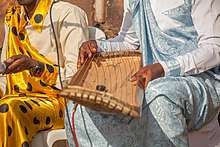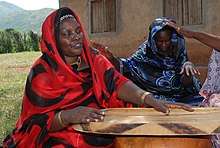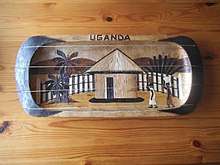Inanga (instrument)
Inānga is a traditional musical instrument of Burundi that is also played in Rwanda and Uganda. In Burundi, it is considered to be the first instrument to be invented in the country.

Usage
Inānga is played in the region of Mugamba in the central part of Burundi. It was played at night for the King as he was resting and for cows, as they say cows love its sound. It was also played during festive events. Inānga follows the pentatonic scale. Major and Minor scales are played in the Burundian culture. The Bass clef is the one that is used in the tuning of the Burundian inanga. A minimum of seven strings with three names of strings: imihanuro (top two strings), imyakiro (Last two strings) and imirya y'amajwi-ihibongoza (The three middle strings).

Inānga is played in Burundi by whispering along with playing the strings and usually songs tell the story of our courageous kings, our way of living and values. Burundians are people who value cows a lot and cows are considered as a symbol of wealth. When given as a gift, cows symbolise a union between families whether they marry their children or when they tighten friendship. Some other stories like fairy tales also appear in Inānga songs. Inānga can be played while dancing too.
Design/construction
Inānga is made of trees called igiháhe, umwūngo, umukoni or umunyáre.

Inānga has eight strings. Among them seven are used with five notes and two octaves.
Its strings are made of the flesh of cows tightened together. Its strings are spread across the length of the Inānga evenly.
It is generally around 1 meter in length and not more than 70 centimeters in width. Its wood is light in tone.
Children are not usually taught to play Inānga. A father keeps his Inānga in a visible place and the child plays and learns to play on his own.[1]
References
- Interview with Mr Torobeka Joseph